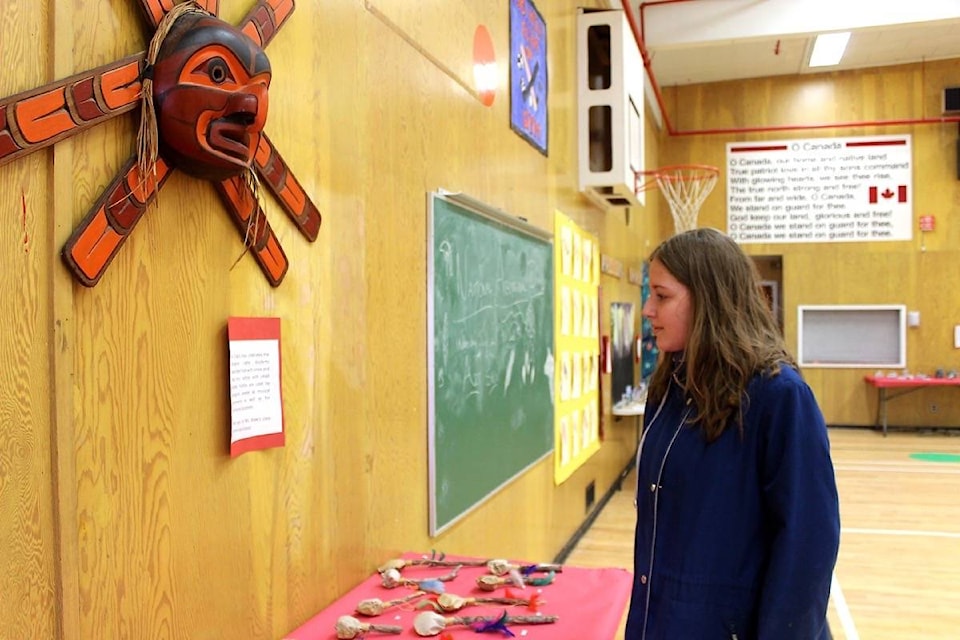In celebration of National Aboriginal Day, the students at 100 Mile Elementary have been busy for months working on art projects celebrating First Nation cultures.
Dreamcatchers, soapstone carvings, beadwork, stained glass eagle feathers, deer hide rattles and drums were among the different projects the classes undertook.
The final projects were put on display on June 21 as part of the school’s National Aboriginal Day activities.
After a grand entry by First Nations students in the school, the classes each took part in a round dance.
Following the ceremony, the classes were invited to see the art created by everyone in the school.
“It’s a great jumping-off point,” says Penny Reid, the First Nations support worker with the school who co-ordinated the projects. “Art in any medium is a great jumping off point for talking about First Nations and the classes all discussed the importance of the art.”
For the younger classes, that could be as simple as painting a salmon and then telling a story about the fish and talking about its importance. Reid says teachers were encouraged to use the artwork as a way of launching into discussions about First Nations history.
Some of the older classes mentored younger classes after they learned how to create the art themselves.
“Everyone was so proud of their art and it’s great to see them take ownership and point out which one was theirs,” says Reid.
Gracie Schmid and Sienna Lamarche are both Grade 6 students. They created dreamcatchers and beadwork as part of their projects.
“We learned about [First Nations] culture and how they live,” says Schmid. “They used lots of natural resources to build things.”
While Lamarche says she found the dreamcatchers easier to make than the beading project, she says she enjoyed learning the art and finding out about their traditional uses.
“We got to share them and find out what they like about it,” she says.
Each art display included a short summary on the symbolism behind the work done by the students, so teachers could explain the exhibits as they walked through the gym.
“I was just proud of all the kids working so hard to get their art done, and thankful that the teachers could squeeze it in,” says Reid.
